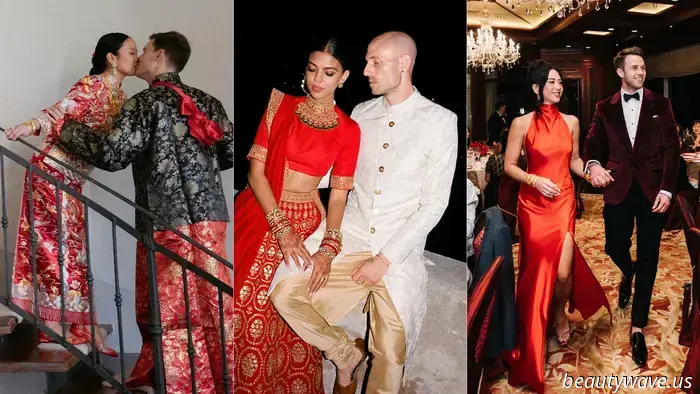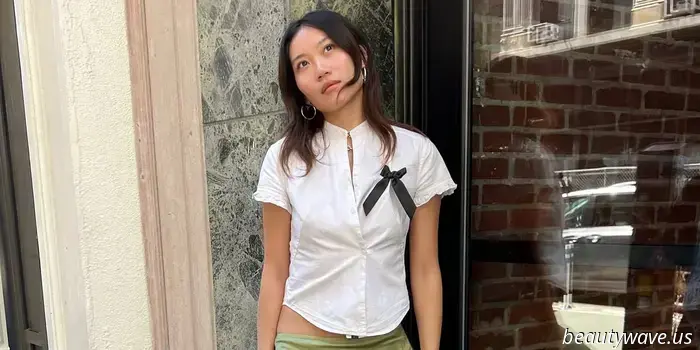
Red Is for the Bride, Not You: Essential Cultural Traditions Wedding Guests Should Be Aware Of
As someone who frequently attends weddings and maintains numerous Notes lists detailing outfits for each occasion, I'm constantly considering the finer details—what is appropriate, what embodies a celebratory spirit, and how to show up respectfully towards the couple and their cultural practices. Recently, I've been reflecting more profoundly on what it means to be a good guest at a cultural tradition that isn’t my own. With May being AAPI Heritage Month, I wanted to take a moment to explore the various traditions present in East, Southeast, and South Asian weddings—not just the aesthetic aspects we often admire from a distance, but also the intricate etiquette and significance underpinning them. I began reaching out to friends, creatives, and community members from across the Asian diaspora to pose genuine questions: What attire is considered respectful for guests? Are there specific colors or styles with symbolic meanings (*ahem* red)? What are the norms surrounding gift-giving? What moments hold the most significance? This piece comes from those enlightening discussions. Instead of providing a list of do's and don'ts, my intention is to share personal insights from individuals who have either been married within these traditions or have attended weddings reflective of them. Each person I spoke to had a distinctive perspective shaped by their family, region, and experiences, yet a common theme emerged from every conversation. These celebrations hold profound cultural meaning, and there’s value in taking the time to understand the "why" behind the "what." Whether you’re planning to attend an Asian wedding this year or just wish to be a more considerate guest, I hope these narratives impart a deeper understanding and remind us that respect can coexist with style; it simply requires mindfulness.
Before we begin, could you share what cultural background or country you identify with regarding wedding traditions? My cultural heritage is Chinese, and those traditions have consistently served as a significant source of inspiration—both personally and professionally. Chinese weddings are rich in symbolism and beauty, from the detailed tea ceremonies to the vibrant colors that are deemed auspicious. They celebrate not only love but also legacy and community, which are elements we aim to reflect in the work we do at Sau Lee.
Were there any specific cultural traditions you included in your wedding that were particularly meaningful to you? The tea ceremony held great significance for me. It’s a deeply intimate moment where the couple conveys utmost respect to their elders, receiving blessings in return for their future. It transcends ritual; it’s a connection between generations, honoring our roots as we transition into a new phase of life.
Are there any guest dress code expectations that you wish more people understood? Weddings embody love, joy, and beauty, and I always find fashion to be a delightful way to participate in the celebration! In Chinese culture, colors have substantial meanings, and it's wonderful when guests choose to wear more festive hues. Bright pinks, golds, soft pastels, and lively colors are very much welcomed. Traditionally, the bride wears a red dress, and in contemporary settings, she may also don a white wedding gown, making these two colors generally avoided by guests.
What are your thoughts on non-Asian guests wearing traditional attire to a wedding? Is there a respectful approach? I find it a lovely gesture, provided it’s done respectfully. Fashion can be a powerful form of homage, and donning a cheongsam, for example, can be a meaningful way to engage with the culture you’re experiencing for the day. If you’re curious or unsure, just ask! Most couples appreciate when their guests show interest in their traditions. I’ve always felt that weddings are about connection and joy, and witnessing people from diverse backgrounds come together in that spirit is what makes them so enchanting.
Are there any gift-giving customs or taboos that might surprise those unfamiliar with your cultural background? There are some delightful gift traditions in Chinese culture! It’s quite common—indeed, very much welcomed—to give red envelopes filled with money at weddings, symbolizing good fortune and happiness. There’s also a superstition regarding numbers, so people often opt for even amounts, which are considered lucky, while the number four is typically avoided due to its phonetic similarity to the word for death. But ultimately, it’s all about the sentiment behind the gift.
What’s one thing you wish more people understood about weddings in your culture? That they are filled with joy and individuality! There’s a beautiful fusion of intimate and meaningful traditions—such as the tea ceremony and the hair-combing ceremony with the mother of the bride the night before—paired with a sense of playfulness. I adore the "door games," where the groom and his groomsmen must work (and sometimes sing or dance!) to enter and see the bride, alongside the numerous outfit changes. It’s like a personal fashion runway throughout the day!
Before we continue, could you please share what cultural background or country you identify with concerning wedding traditions? I was raised in Hong Kong during the British colonial period, so




Other articles
 IYKYK: My Fashionable Gen Z Friends Are Exploring These 6 Low-Key Brands This Summer
A Gen Z editor presents a handpicked selection of trendy brands she's purchasing from this summer.
IYKYK: My Fashionable Gen Z Friends Are Exploring These 6 Low-Key Brands This Summer
A Gen Z editor presents a handpicked selection of trendy brands she's purchasing from this summer.
 The Festival Season Is Here! Check Out These 5 Trendy Aesthetics I'll Be Rocking and How to Shop for Them
The festival season has begun in the UK; get your outfits ready with our guide to festival aesthetics.
The Festival Season Is Here! Check Out These 5 Trendy Aesthetics I'll Be Rocking and How to Shop for Them
The festival season has begun in the UK; get your outfits ready with our guide to festival aesthetics.
 7 Exceptionally Chic Trends Zara Has Perfected for Summer 2025
At this point, why shop anywhere else?
7 Exceptionally Chic Trends Zara Has Perfected for Summer 2025
At this point, why shop anywhere else?
 This is the sole method to style your baggy jeans this summer, as recommended by fashionable celebrities.
Leading celebrities are involved.
This is the sole method to style your baggy jeans this summer, as recommended by fashionable celebrities.
Leading celebrities are involved.
 Seen in France: The Legging Trend That Fashion Enthusiasts Are Pairing With Heels
Model Barbara Palvin was recently seen in the South of France sporting the legging trend that pairs perfectly with heels. Check them out and shop here.
Seen in France: The Legging Trend That Fashion Enthusiasts Are Pairing With Heels
Model Barbara Palvin was recently seen in the South of France sporting the legging trend that pairs perfectly with heels. Check them out and shop here.
 Nikki Glaser's 3 Foolproof Tips for an Immediate Glow-Up—And Why Effort Matters
The comedian discusses "recession blonde," color analysis assessments, and products for a desert-island tour.
Nikki Glaser's 3 Foolproof Tips for an Immediate Glow-Up—And Why Effort Matters
The comedian discusses "recession blonde," color analysis assessments, and products for a desert-island tour.
Red Is for the Bride, Not You: Essential Cultural Traditions Wedding Guests Should Be Aware Of
Real brides discuss the frequent wedding guest error of overlooking cultural traditions, along with advice on how to respectfully attend any ceremony.
